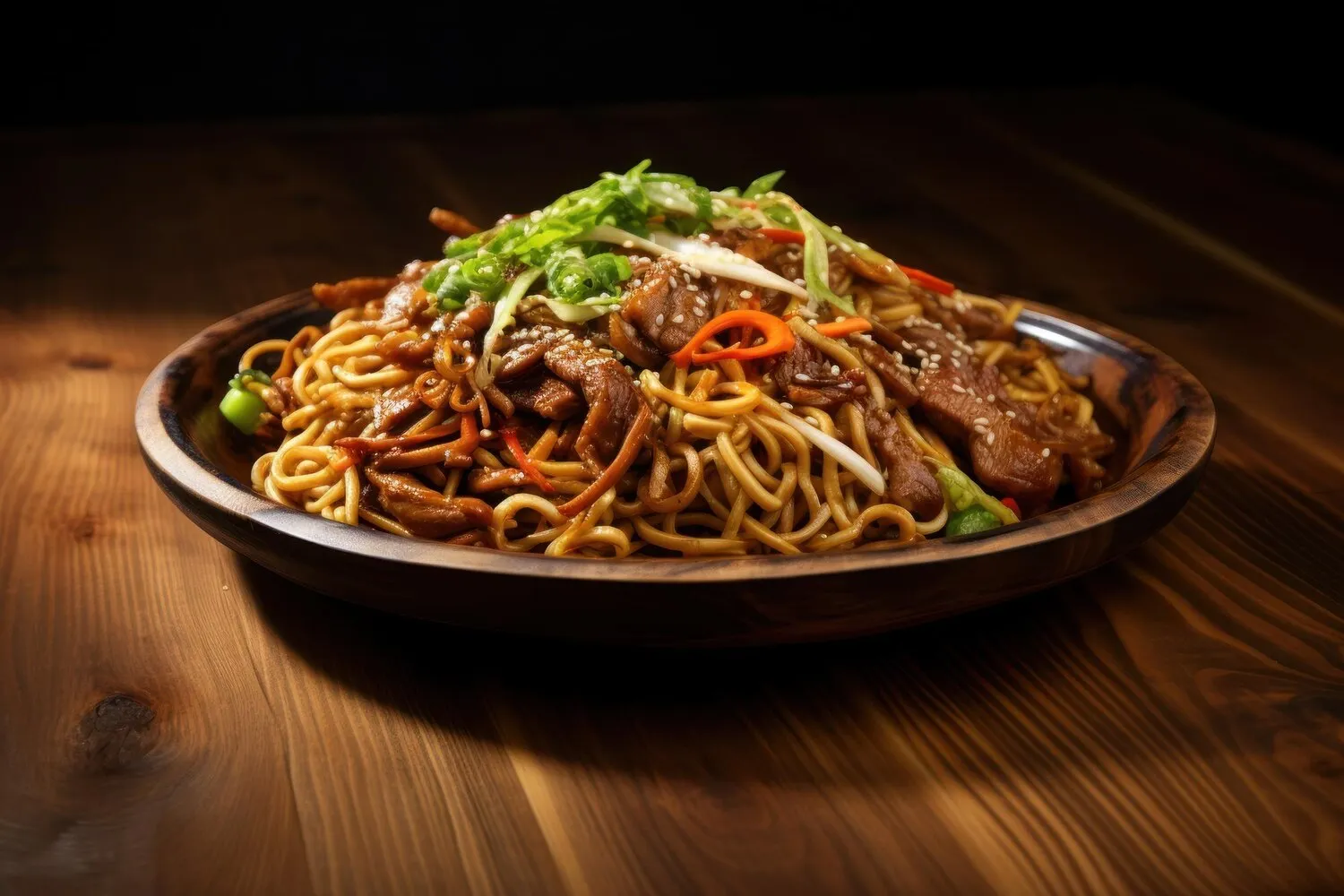
Gebratene Nudeln
Fried noodles with various additions (likely vegetables and/or meat). This is a common staple in Asian cuisine.
Nutrition Facts
* The % Daily Value (DV) tells you how much a nutrient in a serving of food contributes to a daily diet. 2,000 calories a day is used for general nutrition advice.
Fried noodles, a staple in many Asian cuisines, likely originated in China. The practice of stir-frying, a cooking technique central to the dish, has a long history in Chinese cuisine, dating back centuries. As Chinese immigrants spread throughout Asia and the world, they brought their culinary traditions with them, leading to numerous regional variations of fried noodles.
Fried noodles are deeply ingrained in the food culture of many Asian countries, representing both a quick, affordable meal and a dish often enjoyed during celebrations and family gatherings. Its adaptability makes it a popular choice for customizing to individual tastes and available ingredients.
Street Food Staple
In many Asian countries, fried noodles are a ubiquitous street food. Vendors often prepare them in large woks, offering a wide variety of additions and sauces.
Family Meal
Fried noodles are a common dish prepared at home, often using leftover ingredients from other meals. This makes it a practical and economical choice.
Celebratory Dish
In some regions, specific variations of fried noodles are associated with celebrations like birthdays or Lunar New Year, symbolizing longevity and good fortune.
Gebratene Nudeln, or fried noodles, typically offer a savory and umami-rich flavor profile. The exact flavors depend heavily on the specific ingredients used, but common elements contribute to a distinctive taste.
The base flavor often comes from soy sauce, providing saltiness and umami. Oyster sauce or other savory sauces are also frequently used to enhance the depth of flavor. Garlic and ginger add aromatic complexity. Vegetables contribute sweetness and freshness, while meats like pork, chicken, or shrimp add protein and further savory notes. Sesame oil is often used to finish the dish, adding a nutty aroma and richness. A touch of chili oil or flakes can introduce a spicy element.
Noodle Selection
The type of noodle significantly impacts the final result. Fresh egg noodles are a classic choice, but rice noodles, wheat noodles, and even instant noodles can be used. Pre-cooking the noodles slightly prevents them from becoming mushy during stir-frying.
High Heat and Wok Hei
Stir-frying over high heat is crucial for achieving 'wok hei,' a smoky, charred flavor that is highly desirable in Asian cuisine. This requires a hot wok or large skillet and quick, continuous stirring.
Ingredient Preparation
Prepare all ingredients before you begin stir-frying. This includes chopping vegetables, slicing meats, and mixing sauces. Having everything ready ensures that ingredients are cooked evenly and that the noodles don't become overcooked.
Sauce Balance
Finding the right balance of sweet, savory, and spicy is key to a delicious dish. Taste and adjust the sauce as you cook, adding ingredients like soy sauce, oyster sauce, sugar, chili sauce, or sesame oil to your liking.
Explore additional Asian dishes and restaurants
Explore AsianDiscover top dining spots and culinary experiences in Klagenfurt.
Explore KlagenfurtLearn more about the food culture, restaurant scene, and culinary heritage of Austria.
Explore Austria